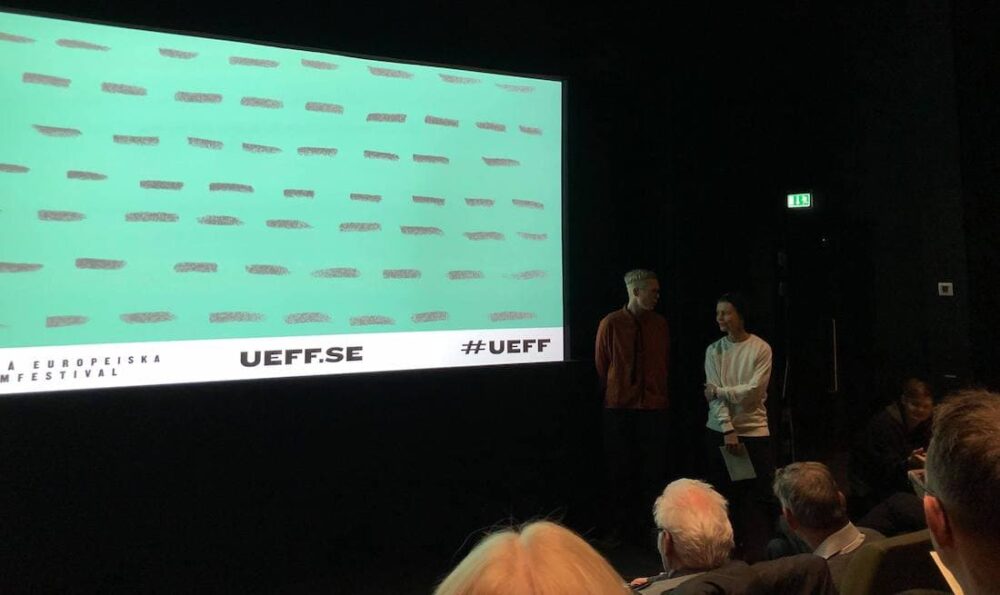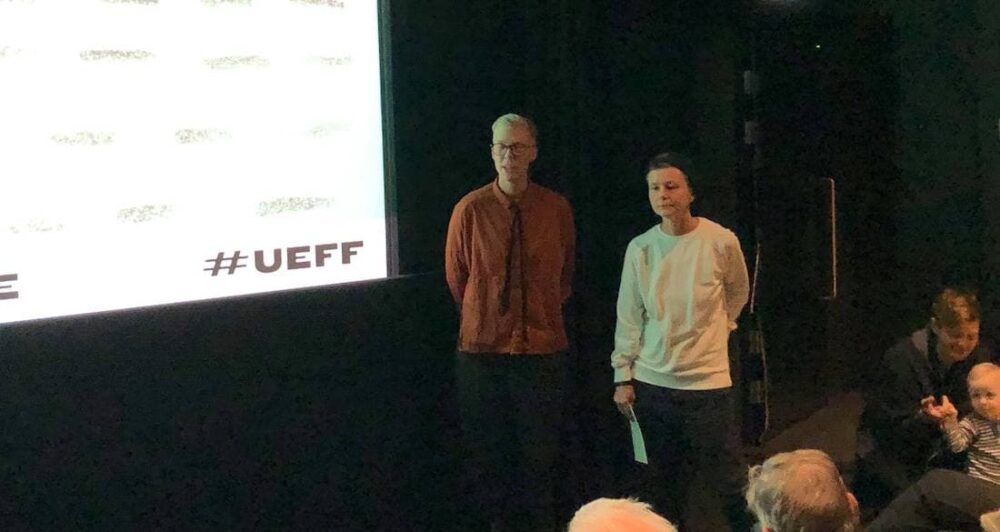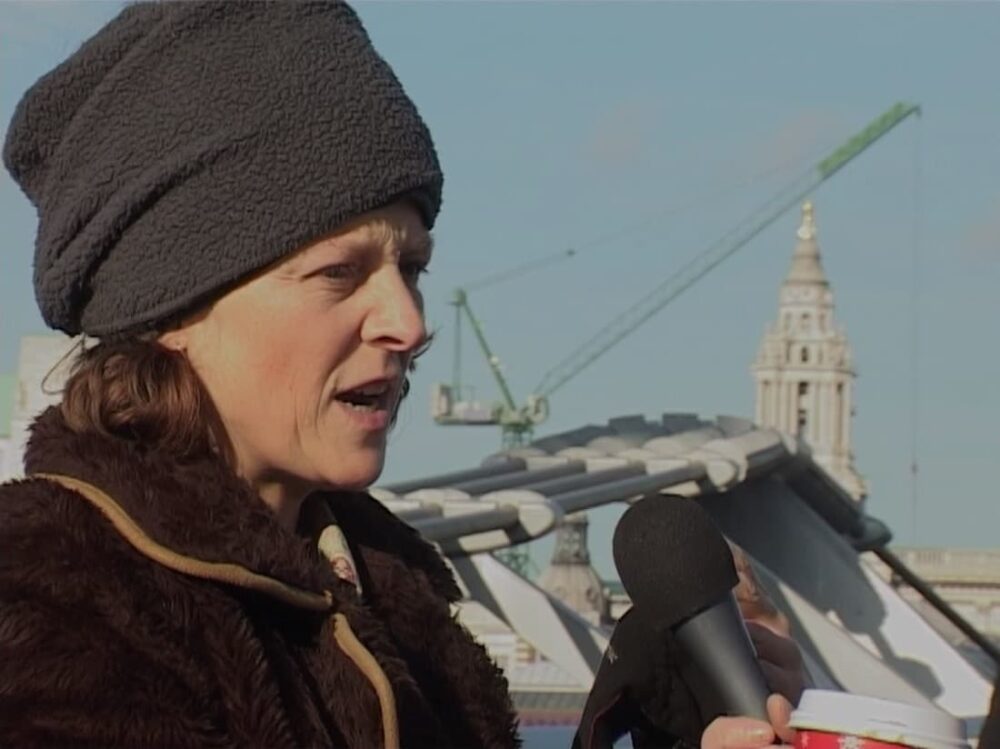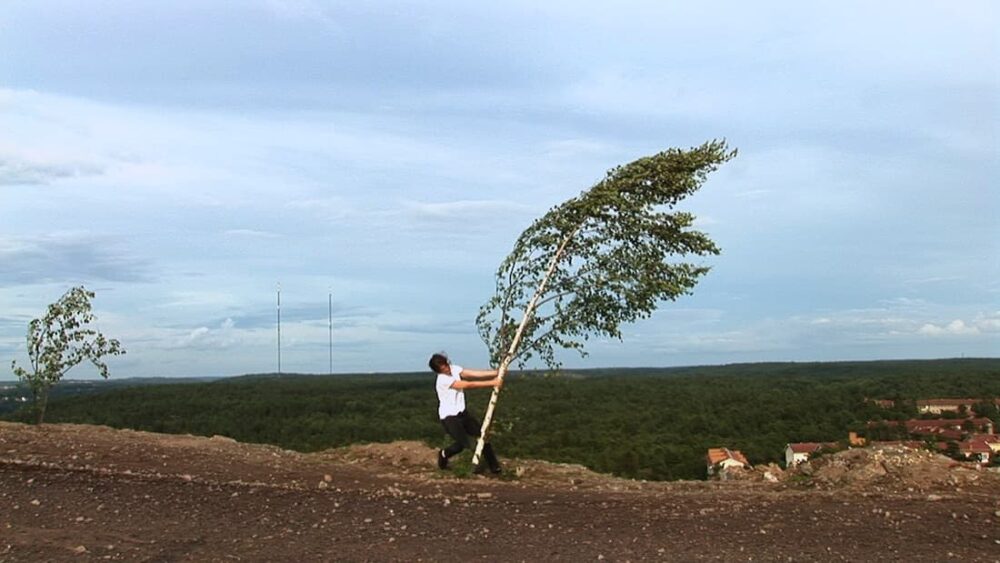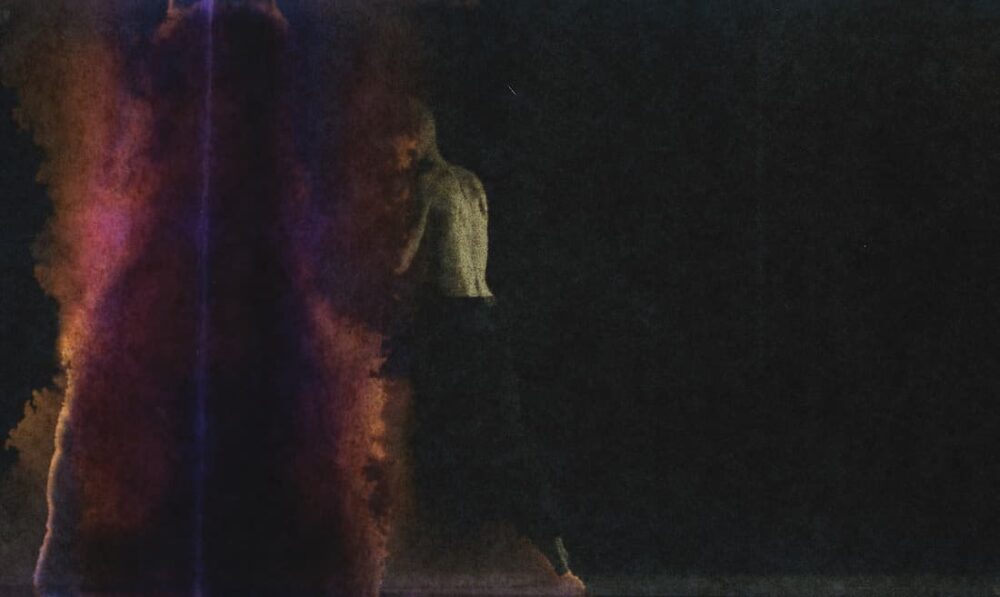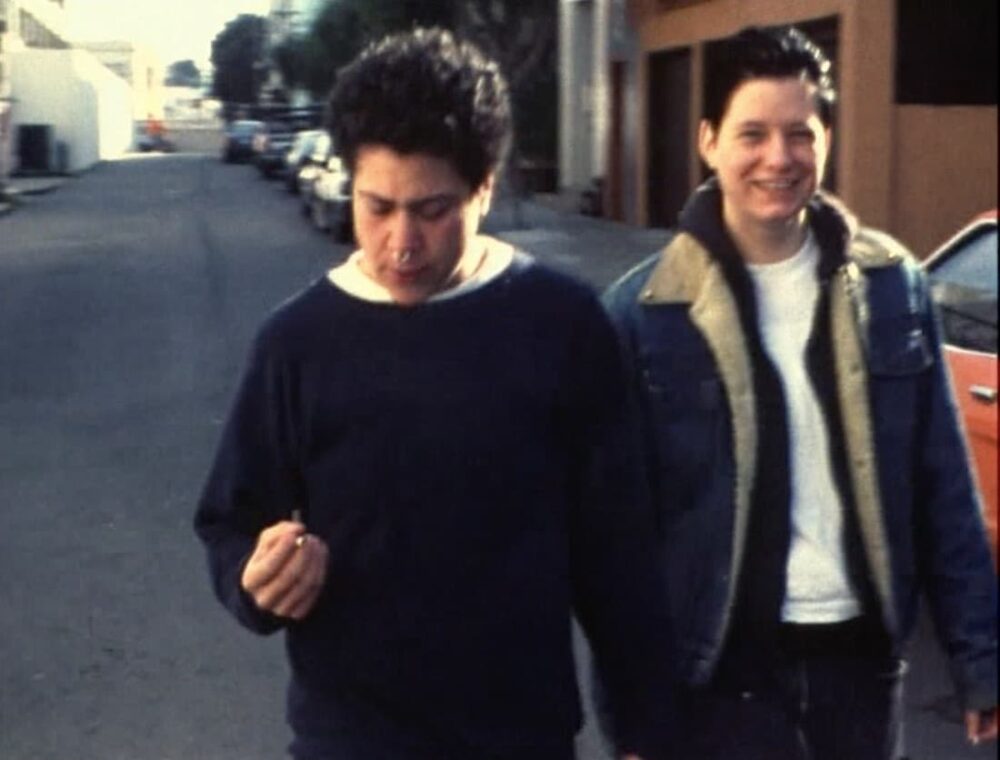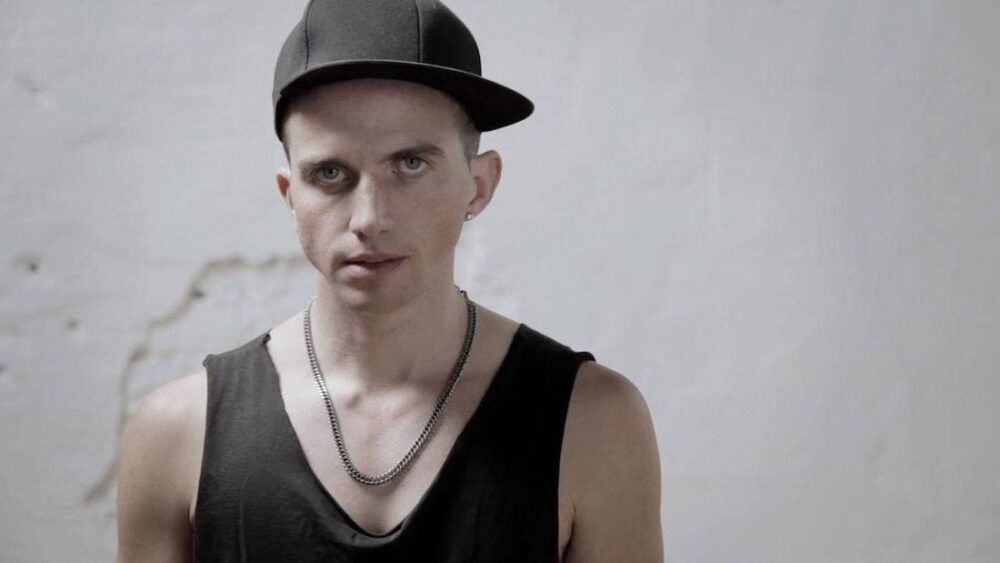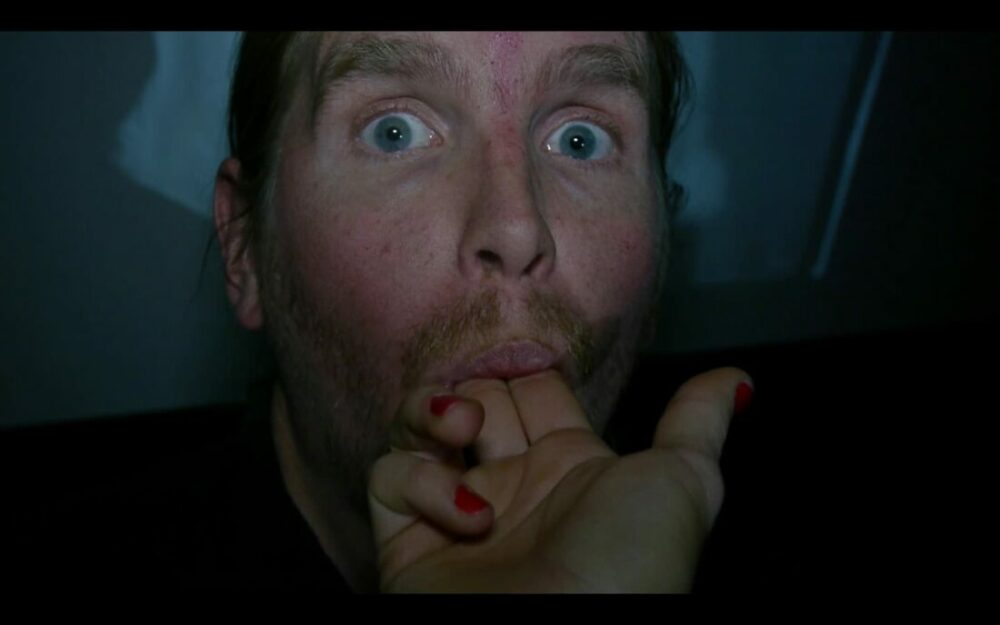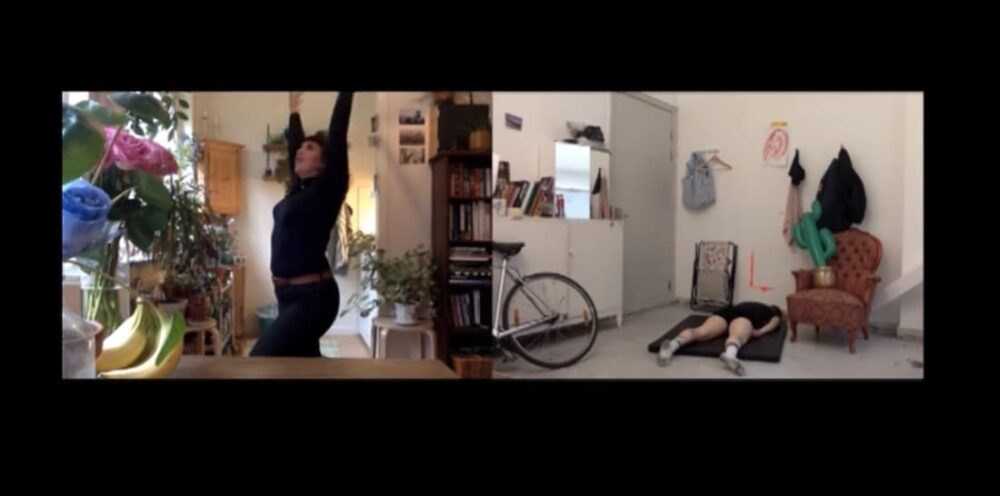It’s a Fucking Man’s World at Umeå European Film Festival 2018
The Swedish Archive for Queer Moving Images presents an evening of film and conversation at Umeå European Film Festival.
It’s a Fucking Man’s World
It’s 2018 and men are walking about freely through the streets. Almost as if #metoo hadn’t even happened. Men continue to take up a huge amount of space in the world of art and film, without any restraints. Those of us who hope for another, more colourful place are many, and we long for other images. Ingmar Bergman turns 100 this year and will be celebrated in tune with the male film geniuses of the world. As per usual, back slaps sound out through the corridors. So, why don’t we put these applauded white men to the side for a moment, and imagine other possible male identities. That way the world will become nicer and much more enjoyable for at least one brief moment.
In an era where digitalization is rewriting film history, SAQMI – The Swedish Archive for Queer Moving Images – wants to take part in filling in the forgotten stories, the bent images and the other perspectives. SAQMI wishes to take the opportunity to enhance the visibility of queer work in many different contexts and build venues for queer moving images in Sweden. With the program It’s a Fucking Man’s World at the Museum of Modern Art’s film club SAQMI invites you to a screening that focuses on manliness.
Text by Anna Linder
Translated from Swedish by Alex Alvina Chamberland
Date: Saturday December 1th 2018, Umeå
Time: at 16.15
Place: Folkets Bio/Tagning, Väven
Language: Swedish, English
Curator: Anna Linder
This program was curated for Filmklubben at Moderna Museet in Stockholm 2018.
Film programme:
GENDER QUEER – Qu’est-ce que c’est? by Del LaGrace Volcano, 2005, 5:50 min
Vedergällning by Hanna Ljungh, 2007, 4:46 min
MAN by Maja Borg, 2016, 13 min
Manhood by Mia Engberg, 1999, 10 min
YʼALL BETTER QUIET DOWN! (HALLÅ, KAN NI LUGNA NER ER!) by Conny Karlsson Lundgren, 2013, 9 min
Robert Frank by Lasse Långström, 2013, 5:30 min
Fält by Sara Parkman and Edith Hammar, 2016, 3:16 min.
Presentation and conversation with Anna Linder.
Facebook
More about the programme:
GENDER QUEER – Qu’est-ce que c’est?
Del LaGrace Volcano (with Cara Lavan) 2005, 5:50 min
Del LaGrace Volcano ventures into the city streets to ask people what makes one a man or woman.
Del LaGrace Volcano (born 1957 in California) is one of the instigators of polymorphous perverse queer culture. A formally trained photographer, Volcano’s work includes installation, performance and film. Works that interrogate the performance of gender on several levels, especially the performance of masculinity and femininity.
Vedergällning [Retaliation]
Hanna Ljungh, 2007, 4:46 min
“Retaliation” is a filmed performance based on a scene from the film “The Virgin Spring” (1960) by Ingmar Bergman. The piece is a revolt and a homage. Retaliation takes a fictional action and studies it to find new meaning. The video is a play with strength and weakness where the woman takes on a traditionally male role in trying her raw strength and getting rid of her frustration by hitting and breaking something.
Hanna Ljungh (born 1974) works with film, photography, sculpture and installation. Ljungh’s work often circles around dominant concepts of interpretation and the relation to non human materials and life forms. She lives and works in Stockholm. Ljungh has an education from Parsons School of Design, New York and Konstfack, Stockholm. Recently her work has been shown Trondheim Konsthall, ANNAELLEGALLERY i Stockholm, Hippolyte Studio and HIAP in Helsinki, The Swedish Cultural Institute in Paris and Pohang Museum of Art i South Korea.
MAN
Maja Borg, 2016, 13 min
“MAN” is an expansion of gender and language, a journey of physical transformation through the wilderness of pregnancy, echoed by the sole remaining recording of Virginia Woolf’s voice.
The film is an experimental expression of form – hand-processed super 8mm film combined with watercolour-negative animation; timelapses of a pregnancy shot frame by frame, day by day; bookended by a series of self-portraits where the filmmaker is satirising her own use of particular attire, generally read as masculine, becoming revelatory when posed in the context of the pregnant body.
For a decade Maja Borg (born 1982) has been exploring the semantics of visual language in her work, experimented with form to push content beyond the limits of established thought. She uses the deconstruction of language to dismantle other systems – be they political, sexual, economic or cultural. This is the second time that Borg draws on the essay “Craftsmanship” (1937) by Virginia Woolf, this time to deconstruct gender identity during her own pregnancy.
Manhood
Mia Engberg, 1999, 10 min
To be a woman and become a man when you live together with a dyke that might be a fag… What is manhood? Do you become a better man if you have experienced being a woman? A film about non-binary identity in San Francisco in the 1990’s. Made in a time when trans activism and queer theory had not yet reached Sweden.
Mia Engberg (born 1970) is a filmmaker and a researcher at Stockholm Uniarts. Among her works are the feature film “Belleville Baby”, receiving a Guldbagge Award for best documentary in 2013, and the feminist art project “Dirty Diaries – 12 shorts of feminist porn” (2009). She is currently running a 4 year research project, “The Visual Silence”, funded by The Swedish Research Council. Her next feature film “Lucky One” will premiere in spring 2019.
YʼALL BETTER QUIET DOWN! (HALLÅ, KAN NI LUGNA NER ER!)
Conny Karlsson Lundgren, 2013, 9 min
”I do not believe in a revolution, but you ought to!”
During the 1973 Christopher Street Day Parade, the transgender activist and Young Lord’s member Sylvia Rivera holds a powerful and defining speech in Washington Square Park, where she accuses a relatively new-formed LGBT-movement of being white, neoconservative, exclusory, racist and transphobic. Rivera is thrown off the stage and after this event she leaves the political scene and New York City for 20 years. The short film “Y’all Better Quiet Down!/Hallå, kan ni lugna ner er!” is based on a transcription of Rivera’s speech. Together with the Swedish queer feminist theatre collective Kvalitetsteatern, and featured guests, a performative manifestation is created. The contemporary urgency in Rivera’s words is investigated, translated and takes shape through the bodies of the collective.
“Y’all Better Quiet Down!/Hallå, kan ni lugna ner er!” is an independent part of the work series “The Sylvia Fractions”. The work was made possible through the archive at The Center – New York City’s LGBT Community Center, with support from IASPIS, the Swedish Arts Grants Committee’s international programme for Visual and Applied Artists.
Conny Karlsson Lundgren (born 1974) is a visual artist currently based in Stockholm. He is fascinated by the ephemeral, seemingly temporary traces and moments that together form a larger context. Karlsson Lundgren holds an MFA in Fine Arts from Valand Academy in Gothenburg. During 2013 he participated in the IASPIS Studio Residency Program in Stockholm and 2014—2015 he was enrolled at the Van Eyck Post Academic Studio Research Program in Maastricht NL. In recent years his work has been exhibited in diverse contexts such as Moderna Museet Malmö, Extra City Kunsthal Antwerp, Gothenburg Art Museum, Kunsthall Nikolaj Copenhagen and TriBeCA Film Center NYC. He recently had solo exhibitions at Haninge Konsthall, Gallery Box Gothenburg and Kalmar Art Museum.
Robert Frank
Lasse Långström, 2013, 5:30 min
A film about why men have to be filled with something other than themselves, as well as a consideration of contemporary art and the male art professor.
Lasse Långström (born 1986) is a film director from Gothenburg who, together with his friends, works with awareness raising homoerotics, anarchist music and occult class struggle comedy. Amongst their past works are the award-winning spiritual yet dirty contemplation ”Vem ska knulla pappa?” [Who’s going to fuck Daddy?] (2017), the feature film ”Folkbildningsterror” (2014), the YouTube hit ”Gråt Allians av vårt hat“ [Weep Alliance from Our Hatered] (2010) and the short film “En kvinnas längtan” [Desire of a Woman] (2006).
Fält
Sara Parkman & Edith Hammar, 2016, 3:16 min
”The video itself is friendship, the body, communication, the home, the room, the security. That it’s fun with body, body is fun, it’s fun with friends, fun to ravage. About synchronized friendship and intuition. In spring 2016, Sara was in Berlin and Edith in Stockholm. We transmitted lots of obscure videos of ourselves via webcam. Maybe naked in a bathtub or strutting about with pink roses or dancing in a white polo shirt. Who knows. In any case, it felt close and fine and relevant in the sense of owning the space and oneself.”
Music: Sara Parkman, Hampus Norén. Video: Edith Hammar. Choreography: Karina Sarkissova.
Sara Parkman (born 1989) is a folk musician, composer, writer and artist from the north of Sweden. This last year Parkman has released two albums (Sara Parkmans Skog and Matriarkerna), one show (Fäboland) and composed music for theater and film (Sång till Välfärden, Nationens Hjärta, Amatörer and Kevlar).
Parkman has a BA in Swedish traditional music from the Royal College of Music in Stockholm, but has stated that the main experience in music comes from a vivid mix of people, places and traditions.
These past few years Parkman has collaborated with artists such Fever Ray, David Väyrynen, Bob Hund and institutions such Riksteatern, Dramaten and SVT. Parkman works a lot with old herding music as a feminist and queer artistic strategy, and lately she has been connecting the musical process with working relationally.
Edith Hammar (born 1984) has a Bachelor of Fine Arts from the Swedish Royal Institute of Art since spring 2017 and is currently living in Helsinki. As a visual artist they work with drawings as their primary expression. The drawings vary in materials and sizes, sometimes burned into wood and of course large ink pens on walls of galleries, homes and clubs. Thematically Hammar’s works exist in a suggestive parallel dimension with references to both paradises and reality.

